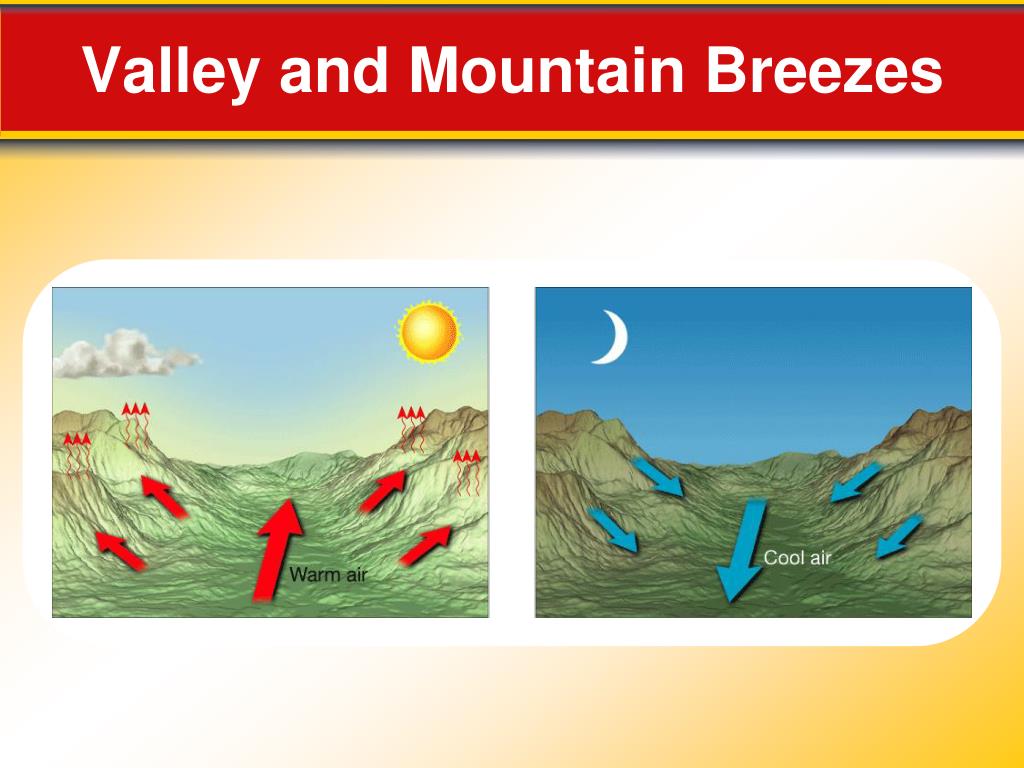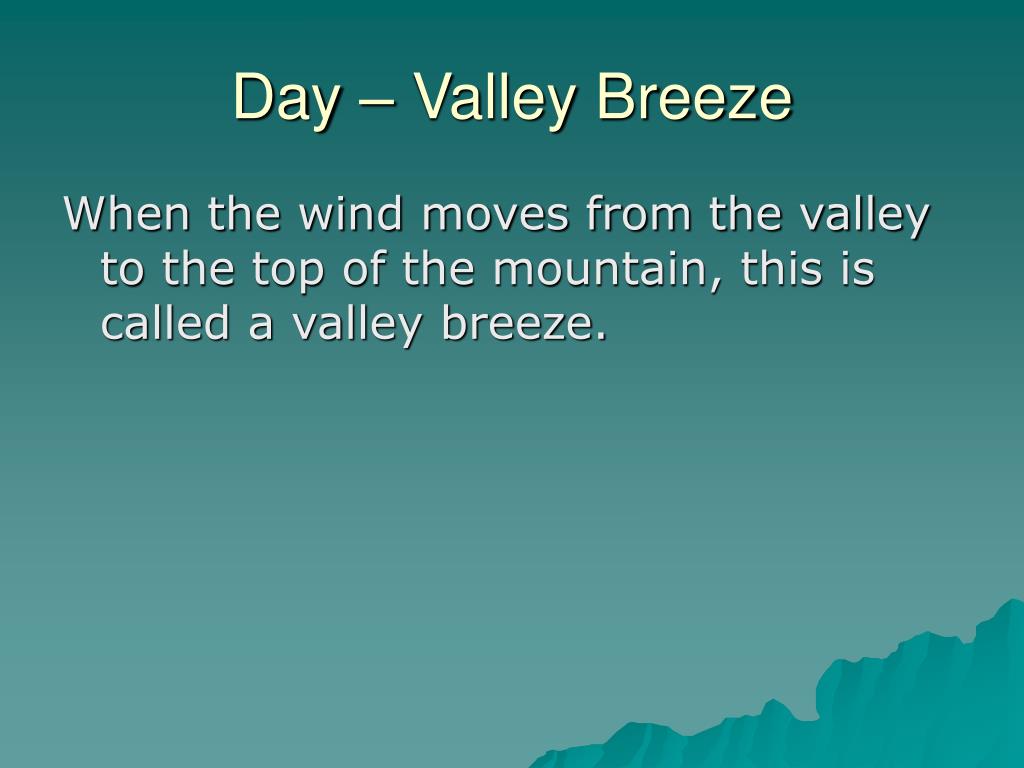

Vertical cross-sections of turbulent heat, moisture and momentum fluxes show that turbulent transport plays an important role in the development and elimination of mountain-plain breeze circulation.įocusing on the complex underlying surface area in central–southern Hainan Island, this study uses the Advanced Research Weather Research and Forecasting Model (Version 4.0) to simulate a typical mountain circulation case without obvious weather system forcing, and tries to reveal the impacts of land cover changes on the mountain circulation. Stronger turbulences are formed over the mountain area compared to the plain area. Owing to this unique terrain feature, the north portion of the mountain demonstrates more evident mountain and plain breezes compared to the south and middle portions. The plain and mountain breezes can be predicted explicitly by the model, and the consequent circulations are coupled with other factors such as turbulent movement and vertically propagating mountain waves.

Simulation results show that the 2 m temperature distribution of the plain and mountain areas is peculiar due to the occurrence of the temperature inversion. Turbulence characteristics are also examined to better understand the local circulation of the area. It does not store any personal data.The spatiotemporal structure and evolution of the thermally-induced mountain-plain breeze circulation in the Longquan Mountain, eastern Chengdu, are studied by the WRF-ARW model based on a two-day case. The cookie is set by the GDPR Cookie Consent plugin and is used to store whether or not user has consented to the use of cookies. The cookie is used to store the user consent for the cookies in the category "Performance".

This cookie is set by GDPR Cookie Consent plugin. The cookie is used to store the user consent for the cookies in the category "Other. The cookies is used to store the user consent for the cookies in the category "Necessary". The cookie is set by GDPR cookie consent to record the user consent for the cookies in the category "Functional". The cookie is used to store the user consent for the cookies in the category "Analytics". These cookies ensure basic functionalities and security features of the website, anonymously. Necessary cookies are absolutely essential for the website to function properly.
#VALLEY BREEZE FREE#
However, at night the temperature difference between mountain slopes and free atmosphere at the same elevation is reversed. Occasional afternoon thundershowers on warm and humid days may also be produced by this kind of upslope winds in the mountainous regions. The valley breeze is sometimes accompanied by the formation of cumulus cloud near mountain peaks or over escarpments and slopes. Anabatic wind is another name given to valley breeze. This upslope breeze is called the valley breeze. This results in warm air moving up along the slope. During daytime the slopes of mountains heat up rapidly because of intense insolation, but the free atmosphere at the same elevation over the lowlands is not heated to the same extent. These winds are chiefly caused by temperature differences between two points at the same elevation, but with a different distance from the earth’s surface. In other words, these diurnal wind systems develop frequently over areas with large differences in relief. This day-time up valley winds and nightly down-valley winds are commonly found in the mountainous regions.


 0 kommentar(er)
0 kommentar(er)
